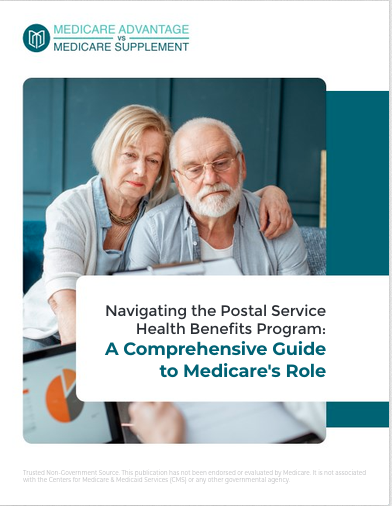Key Takeaways
-
Medicare consists of multiple parts, each covering different healthcare needs, and understanding how they work together can prevent unnecessary expenses.
-
Enrollment windows are time-sensitive; missing them can lead to late penalties and gaps in coverage, so it’s important to know when and how to enroll.
Medicare Starts with These Four Parts
Medicare in 2025 is built on four core components: Parts A, B, C, and D. Each part covers a different aspect of your healthcare. If you start with a clear picture of what each part actually includes, you’ll avoid confusion later on.
Part A: Hospital Insurance
You get Part A automatically if you’re receiving Social Security benefits at age 65. If you’re not receiving those benefits yet, you can enroll manually.
Here’s what Part A covers:
-
Inpatient hospital stays
-
Skilled nursing facility care (following a qualifying hospital stay)
-
Hospice care
-
Limited home health care
Most people don’t pay a premium for Part A, but there is a deductible. In 2025, the hospital deductible is $1,676 per benefit period. After 60 days, daily coinsurance kicks in.
Part B: Medical Insurance
Part B covers routine and specialty doctor visits, preventive services, outpatient care, and durable medical equipment.
-
You pay a monthly premium, which in 2025 is $185.
-
There’s also a $257 annual deductible.
Once you’ve met the deductible, Part B generally covers 80% of Medicare-approved services. You cover the remaining 20% unless you have supplemental coverage.
Part C: Medicare Advantage
Part C is an optional alternative to Original Medicare. These are bundled plans offered by private companies that include Part A and Part B coverage, and often Part D.
While these plans are popular, they come with some trade-offs:
-
You must use the plan’s provider network
-
Prior authorizations are often required for services
-
Costs and coverage vary by plan and location
In 2025, many plans still advertise extra benefits like dental or vision coverage, but these come with usage rules and restrictions.
Part D: Prescription Drug Coverage
If you stick with Original Medicare (Parts A and B), you need to enroll in Part D separately for prescription drug coverage.
For 2025:
-
The deductible is up to $590
-
There’s now a $2,000 cap on out-of-pocket prescription drug costs
This cap eliminates the former “donut hole,” offering much-needed relief if you take expensive medications.
Enrollment Timing Matters More Than You Think
Signing up for Medicare is not automatic unless you’re already receiving Social Security. Getting the timing wrong can cost you both money and coverage.
Initial Enrollment Period (IEP)
This is your first chance to enroll. It starts three months before your 65th birthday, includes your birth month, and extends three months after—a total of seven months.
Missing this window means you may:
-
Incur late enrollment penalties for Part B or Part D
-
Have to wait for the next enrollment period
-
Go without coverage for several months
General Enrollment Period (GEP)
If you miss your IEP, the GEP runs from January 1 to March 31 each year. Coverage begins July 1. Penalties may apply, and you might be uninsured for a while.
Special Enrollment Period (SEP)
You may qualify for an SEP if you had job-based coverage and delayed Medicare. You have eight months after that coverage ends to sign up without a penalty.
Annual Enrollment Period (AEP)
From October 15 to December 7 every year, you can:
-
Switch between Original Medicare and Medicare Advantage
-
Change Part D plans
Your changes take effect January 1 of the following year.
How Medicare Works With Other Coverage
If you have other health coverage—from an employer, retiree plan, or your spouse’s plan—you need to understand how it coordinates with Medicare.
Employer Coverage
-
If you’re working and your employer has 20+ employees, your employer insurance pays first.
-
For employers with fewer than 20 employees, Medicare typically becomes the primary payer.
Retiree Plans
Some government employees and retirees have access to retiree health benefits. Medicare usually becomes the primary payer once you’re eligible, and your retiree plan becomes secondary.
Not enrolling in Medicare on time could jeopardize these benefits or cause gaps in your coverage.
TRICARE and VA Coverage
-
TRICARE requires you to enroll in Medicare Parts A and B at age 65 to keep coverage.
-
VA benefits work separately from Medicare. You can use either, but not both at the same time.
What Medicare Doesn’t Cover
It’s just as important to know what Medicare doesn’t cover, so you can prepare for potential out-of-pocket costs.
Not Included in Original Medicare:
-
Long-term custodial care
-
Routine dental, vision, and hearing services
-
Most care outside the U.S.
-
Cosmetic surgery
-
Acupuncture (except for certain pain conditions)
To fill these gaps, many people enroll in Medigap (supplemental coverage) or look at Medicare Advantage plans—though each has its own rules and restrictions.
Understanding the Costs You Might Face
Even with Medicare, healthcare isn’t free. You’ll face a combination of premiums, deductibles, copayments, and coinsurance.
Here are typical costs for 2025:
-
Part A: Usually no premium; deductible is $1,676
-
Part B: $185 premium and $257 deductible
-
Part D: Premiums vary; deductible can go up to $590
-
Medicare Advantage: Costs vary based on plan, location, and usage
You can also face additional costs from:
-
Non-covered services (like dental or vision care)
-
Balance billing (if a provider doesn’t accept Medicare assignment)
-
Late enrollment penalties (permanently added to your premium)
Making Informed Plan Choices
Whether you stick with Original Medicare or choose Medicare Advantage, the right option depends on your specific needs.
Original Medicare
Pros:
-
Nationwide provider access
-
Easier to pair with supplemental coverage
Cons:
-
No built-in prescription drug coverage
-
Doesn’t cover routine dental, vision, or hearing
Medicare Advantage
Pros:
-
All-in-one convenience
-
May include extra benefits
Cons:
-
Limited provider networks
-
Prior authorization hurdles
-
Plan rules vary widely year to year
Every fall, review the Annual Notice of Change (ANOC) from your current plan. If your needs change or your plan changes, you may want to make a switch.
Avoiding the Most Common Medicare Mistakes
Medicare is full of deadlines, fine print, and changing rules. But the most costly mistakes usually come from lack of planning.
Here’s what to watch out for:
-
Missing your enrollment window
-
Assuming everything is covered
-
Failing to compare drug plans
-
Skipping your Annual Notice of Change letter
-
Choosing a plan based only on premiums
Knowledge is your best defense. And so is asking questions before you make any changes.
Start With the Basics and Build From There
You don’t have to understand every detail of Medicare all at once. But you do need a clear foundation to build on. Knowing the basics of each part, when to enroll, and what’s not covered helps you avoid unnecessary expenses and unpleasant surprises.
If you still have questions about your options or need help choosing the right coverage, speak with a licensed insurance agent listed on this website. They can help you understand your choices based on your unique healthcare and financial needs.









